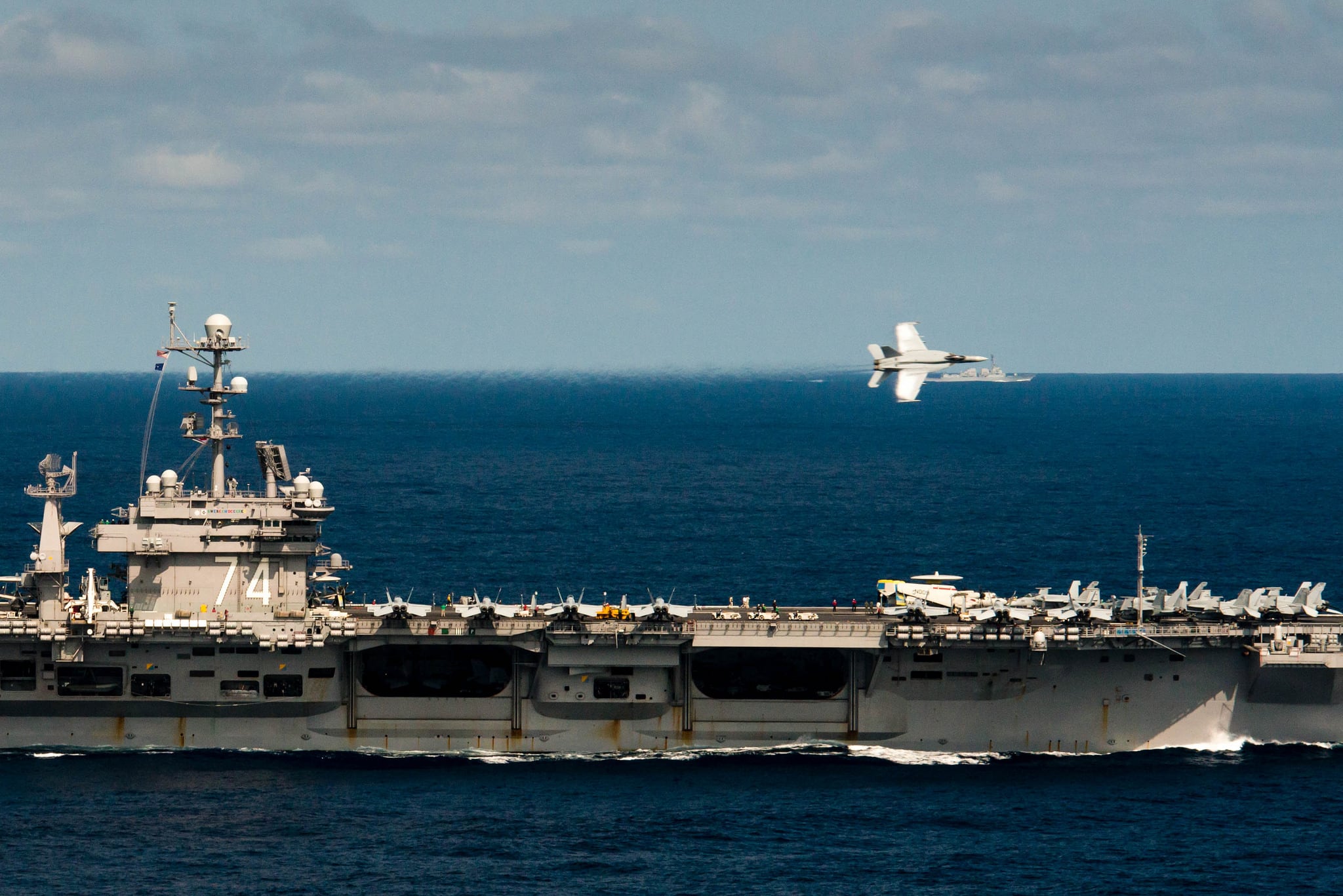The four-ship U.S. strike group that patrolled the disputed South China Sea was followed by Chinese warships, a show of force that prompted a hard-line response from China doubling down on its claim to nearly all of the resource-rich sea.
Just days after the carrier Stennis and her escorts departed the South China Sea, China's foreign minister has doubled down on China's claim to ownership of almost all of the hotly contested body of water.
China's foreign minister said his country's sovereignty claims are supported by history and made a veiled reference to the 5-day patrol by the Stennis Carrier Strike Group, as well as recent passes by China's man-made islands by by Making a thinly veiled reference to the Stennis patrol and recent freedom of navigation operations by the destroyers Lassen and Curtis Wilbur in recent months, Wang Yi told reporters at an annual press conference that history is on China's side.
"The South China Sea has been subject to colonial invasion and illegal occupation and now some people are trying to stir up waves, while some others are showing off forces," Wang Yi said, according to an Associated Press report, a day after the Stennis CSG departed the South China Sea on March 6. "However, like the tide that comes and goes, none of these attempts will have any impact. History will prove who is merely the guest and who is the real host."
Yi also batted away suggestions that China was militarizing the region, a charge levied last month by U.S. Pacific Command head Adm. Harry Harris at a Senate Armed Services Committee hearing.
"China cannot be labeled as the most militaristic. This label is more suited to other countries," Wang said.
Aircraft carrier John C. Stennis, cruiser Mobile Bay and Antietam, and destroyers Chung-Hoon and Stockdale, William P. Lawrence left the South China Sea Sunday after five days in the region conducting flight ops. Two ships are still operating in the South China Sea: the command ship Blue Ridge and the cruiser Antietam, which stopped for a port visit in Manila, the Philippines.
"People's Liberation Army (Navy) ships remained in the vicinity of Stennis during its time in the South China Sea," the U.S. Navy said in its Monday press release.

An F/A-18E Super Hornet performs a flyby on March 7, 2016, during an aerial change of command ceremony above USS John C. Stennis (CVN 74) in the Philippine Sea.
Photo Credit: MC Seaman Tomas Compian/Navy
Experts say the Stennis's patrol of the South China Sea was a deliberate show of force by the U.S. Navy, which downplayed the significance, in the wake of heightened tensions with China. Indeed, the Washington State-based carrier is on the way to joint exercises with South Korea, which means the group had to bypass the Korean pPeninsula to enter the South China Sea then double back, which suggests intention.
The Stennis group's said the interactions with the Chinese navy were professional and non-threatening.
"Based on the bridge-to-bridge communications USS Chung-Hoon had with the [People's Liberation Army-Navy] ships, it is clear that the Chinese Navy prides itself on professional communications and interactions," said Cmdr. Tom Ogden, commanding officer of destroyer Chung-Hoon, in a press release.
The U.S. Navy has characterized the patrol through the South China Sea as a "routine" operation, similar to its closely-watched freedom of navigation patrols near China's recently built islands. In October, before the Lassen's patrol within 12 miles of the Spratly Islands, the chief of naval operations called the mission non-provocative, adding that it was "part of routine navigation in international waters."
Patrols such as the one made by the Stennis Carrier Strike Group are intended to assure allies and regional partners that the U.S. is committed to their interests in the region, said aimed at easing the concerns of allies and undermining Chinese claims that the U.S. ins't as committed to its partners in the region as it says. Bryan Clark, a retired submarine officer and analyst with the Center for Strategic and Budgetary Assessments.
"Nobody in Beijing thinks that the United States doesn't care about what's happening in the South China Sea, but they might tell our allies that," he said. "They might say, 'Hey, you say the U.S. has your back but we don't ever see them around here.'"
While tensions remain high in the South China Sea, China's navy and the U.S. Navy have continued to talk and have sought to head off any unnecessary hostilities, which has come in the wake of high-level run-ins.
The command ship Blue Ridge is slated to make a visit to China later this spring, during which the sailors are going to play sports with their Chinese counterparts while 7th Fleet head Vice Adm. Joseph Aucoin will be holding talks with his counterparts about steps to increase communication and prevent confrontations at sea. leaders about ways to maintain professionalism during unplanned encounters at sea.
David B. Larter was the naval warfare reporter for Defense News.





